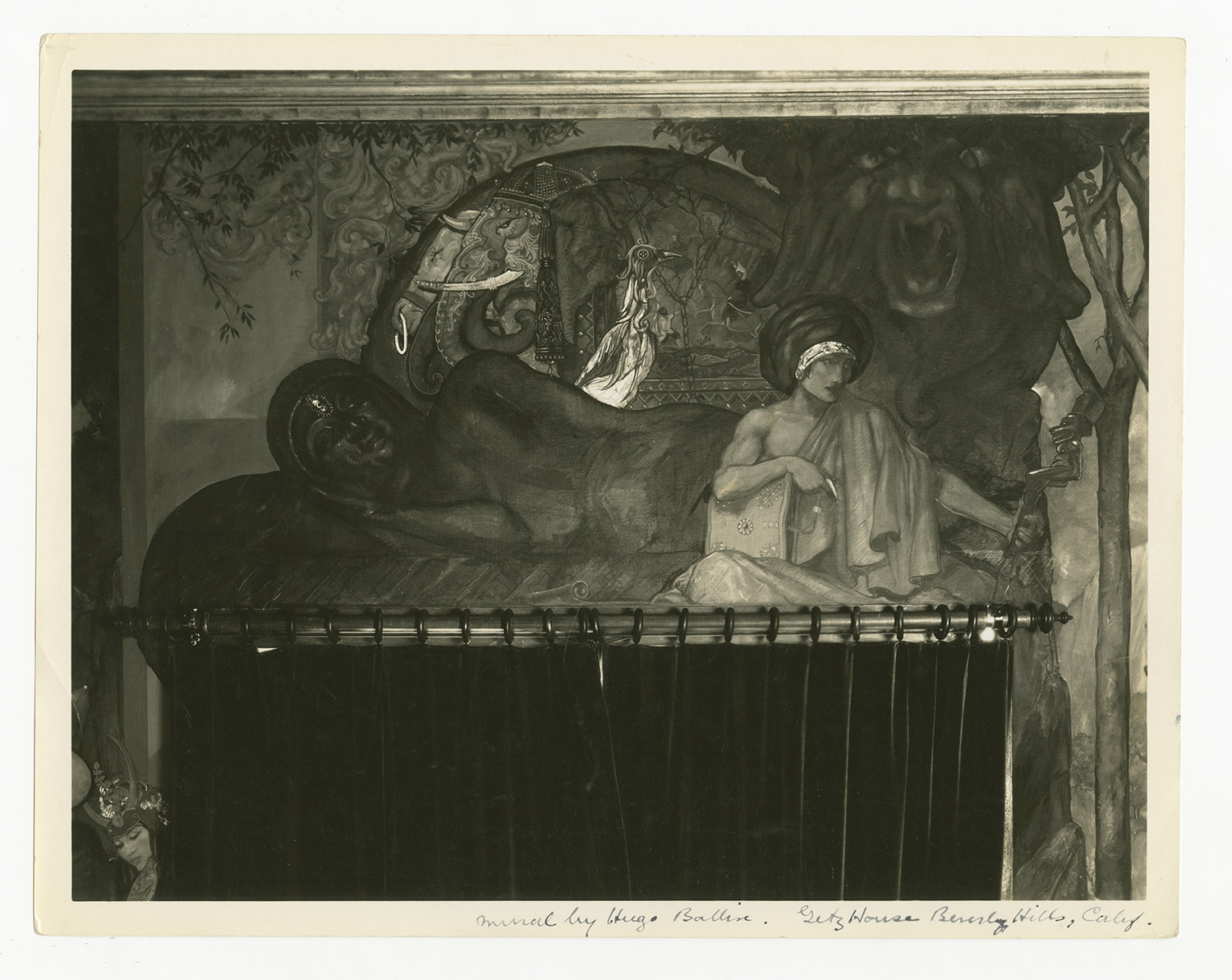Getz House - Wall of Religions (1)

- Arthur Millier's description
- Cinematic Influences
- Source/Citations
Arthur Millier wrote in his review of the murals, “The Ballin Murals in Los Angeles,” California Southland (1927):
"…the story of the Wall of Religions will indicate the extraordinary character of this work… the scheme starts with the mustard seed, a symbol of the Far East; then an ascetic, turned blue-brown in the exercise of self-denial. Confuscius wears a sumptuous red hat uniting symbols of Buddhist dogma and Confucianism. He is not disturbed by the white mouse on his shoulder – mice and men in his eyes not being so far apart and the mouse a symbol of perseverance. A Chinese girl wears the hat of a warrior and carries upon her finger the white hawk of the East. The girl of Siam accompanies her religious chants on a lute on the tip of which sites a devil-god. Above this group rises the Great Wall of China.
Over a curtained doorway Buddha sleeps with his eye in his forehead. Above him is the most widely worshipped of all Hindu gods, Ganesha the elephant, embodiment of success in life; and Surabi the cow of plenty, a feminine symbol of the teeming earth. The terrifying head of Bes, death the ever-present, bounds this group. A mythical goose, vehicle of the Indian gods, forms a rare decorative highlight, and all alone sits a man who seems less happy than the ascetic or the pious girls. He is the philosopher, doubting all creeds, yet absorbed in the contemplation of his own little idol, which doubtless symbolizes himself."
Ballin had done extensive research on Eastern religions for his movie "Pagan Love" (1920) and, as in the film, he did his best to accurately represent those cultural traditions in this portion of the mural. Each section of his "Wall of Religions" was focused on an individual faith/creed and composed as an individual piece. They are ordered from ancient to modern, moving from left to right in a montage-type sequence that told Ballin's version of the history of religion. This stitching together of individual scenes was a technique Ballin had learned as a filmmaker but brought to his painting in the Getz House murals. As a reviewer described in Arts and Decoration, the murals were "rhythmically bound together in colors which are warm and glowing, yet not obtrusive. Hugo Ballin has developed [the themes] into stories of the life of man, handled lightly, sympathetically, [and] with a gleam of irony."1
Image appears in the Hugo Ballin Papers (collection #407), Charles Young Library, Department of Special Collections, University of California Los Angeles, Box 15, Folder 4.
Mural caption from Arthur Millier's review of the murals, “The Ballin Murals in Los Angeles,” California Southland (1927)
1. Quotation from Arts and Decoration vol. 22 August (1928) p. 39.
| Previous page on path | Getz House - Gallery, page 2 of 4 | Next page on path |

Discussion of "Getz House - Wall of Religions (1)"
Add your voice to this discussion.
Checking your signed in status ...